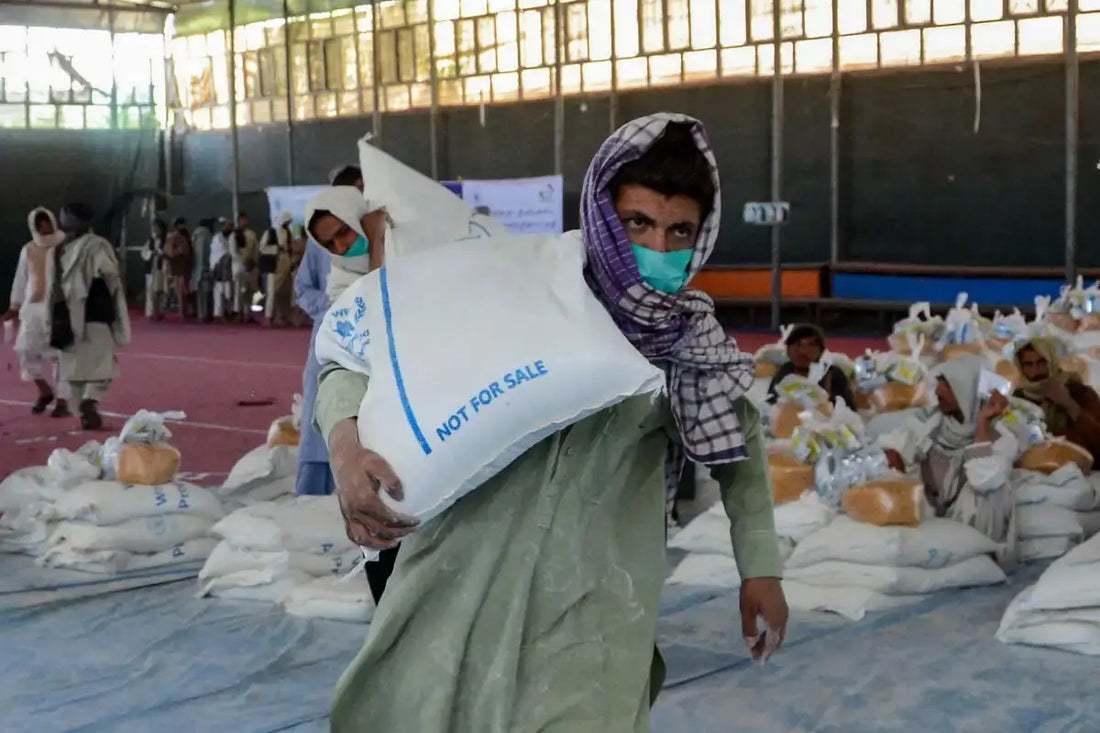
Freeze-Dried Foods: A Proven Solution to Global Food Insecurity
Share
Food insecurity remains one of the most critical challenges of our time, affecting nearly 800 million people worldwide (UN, 2021). Food insecurity facts from the United Nations. But while hunger continues to rise due to climate change, economic instability, and food waste, one innovative solution has already been making an impact: freeze-dried foods.
From disaster relief efforts to military operations and even space exploration, freeze-dried foods have played a vital role in ensuring access to nutritious meals in the most challenging situations.
Real-World Impact
1. Disaster Relief: Providing Food in Crisis Situations
Natural disasters often leave communities without access to fresh food. In 2010, after the Haiti earthquake, international aid organizations faced major logistical challenges in delivering food supplies. Traditional food aid spoiled quickly in Haiti’s humid climate, and refrigeration was unavailable.
Solution: Relief agencies, including the World Food Programme (WFP), turned to freeze-dried foods. These meals were lightweight, easy to transport, and required only water to prepare, providing survivors with nutrient-rich meals despite supply chain disruptions.
Learn more about the World Food Programme’s efforts to combat hunger.
Impact: Freeze-dried foods helped sustain thousands of Haitians, ensuring they received necessary nutrients while rebuilding their lives.
2. Military Use: Feeding Troops in the Field
The U.S. and other militaries have relied on freeze-dried foods since World War II. Soldiers on the battlefield need nutrient-dense, portable, and long-lasting food that can withstand extreme conditions.
Solution: Freeze-dried meals, commonly known as MREs (Meals Ready to Eat), became a staple. These meals require minimal water to prepare and provide the energy and sustenance needed for extended missions.
See how the Canadian Army relies on freeze-dried meals
Impact: Troops operating in remote areas, such as Afghanistan and Iraq, have relied on freeze-dried foods to maintain strength and endurance, preventing malnutrition even in food-scarce regions.
3. Space Exploration: Feeding Astronauts Beyond Earth
NASA has been using freeze-dried foods since the Apollo missions in the 1960s. Astronauts need lightweight, nutritious, and long-lasting meals to survive in space, where fresh food is not an option.
Solution: NASA developed an advanced freeze-drying process to preserve flavor, texture, and nutrients in foods like fruits, soups, and meats.
Explore NASA’s freeze-dried foods for space missions
Impact: Freeze-dried foods have enabled long-duration space missions, proving their effectiveness in sustaining human life in extreme environments. The same technology can be applied to food shortages on Earth, where climate change and environmental disasters threaten traditional agriculture.
4. Addressing Malnutrition in Remote Communities
Many rural and isolated communities lack access to fresh, nutritious food due to poor infrastructure, extreme weather, or economic instability. For example, Indigenous communities in Canada’s northern regions often rely on expensive, low-nutrient packaged foods because fresh produce is difficult to transport and perishes quickly.
Solution: Organizations like Food Banks Canada and Feeding America have introduced freeze-dried fruit and vegetable programs, allowing these communities to access vitamin-rich foods without refrigeration.
Learn more about Food Banks Canada's initiatives
Impact: Children and families in remote areas now have access to affordable, nutritious alternatives, reducing the risk of diet-related illnesses such as diabetes and obesity.
5. Reducing Food Waste and Increasing Shelf Life
Food waste is a major contributor to food insecurity. The World Food Programme reports that nearly 1.3 billion tons of food are wasted annually, much of it due to spoilage. Fresh fruits and vegetables are especially vulnerable, often discarded before they can reach those in need.
Solution: Freeze-drying extends the shelf life of fruits and vegetables for years instead of days, ensuring that nutritious foods can be stored, transported, and consumed when needed.
Read about global food waste solutions
Impact: Supermarkets and food banks are now exploring freeze-dried alternatives to reduce waste and distribute food more effectively, ensuring that fewer people go hungry.
Why Freeze-Dried Foods Are a Game Changer for Food Security
Long Shelf Life: Freeze-dried foods last up to 25 years, reducing reliance on frequent deliveries in food-insecure areas.
Minimal Storage Needs: No refrigeration required—perfect for disaster zones, military camps, and remote communities.
Nutritional Integrity: Unlike canned or processed foods, freeze-drying retains up to 97% of vitamins and minerals.
Lightweight & Cost-Effective: Easier and cheaper to transport than fresh food, making distribution more efficient.
Final Thoughts: A Scalable Solution for the Future
As climate change, natural disasters, and global conflicts continue to disrupt food systems, freeze-dried foods offer a sustainable, life-saving solution. Whether it’s for emergency relief, military use, or feeding vulnerable populations, their nutritional stability and longevity make them a powerful tool in the fight against food insecurity.
If governments, NGOs, and food producers continue investing in freeze-drying technology, we could significantly reduce hunger and malnutrition worldwide.
What Can You Do?
By choosing freeze-dried foods, you support a sustainable solution to food insecurity. Whether stocking your pantry or supporting organizations that distribute freeze-dried meals, every effort helps build a future where no one has to go hungry.
